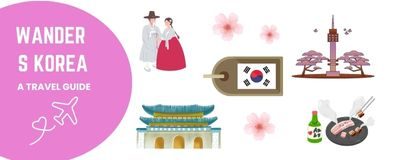
If you’re looking for a real slice of Korean daily life, Seoul’s markets are where it’s at.
From sizzling street food and bargain shopping to local produce and handmade goods, these markets offer a blend of the traditional and modern—served with a side of sensory overload.
During my time living in South Korea, I regularly visited my local market and got a feel for just how central these spots are to everyday life.
While I haven’t shopped extensively at every major market in Seoul, I’ve explored several and pulled together this guide to help you know what to expect—whether you’re bargain hunting or just hungry for tteokbokki.

This post highlights both the iconic markets and a few more low-key spots that offer a quieter, more local vibe.
Best Markets in Seoul At a Glance
Seoul’s traditional markets are packed with flavor, culture, and hidden gems. If you’re short on time, here are the top picks:
- Namdaemun for cheap souvenirs and variety
- Gwangjang for must-try Korean street food
- Myeongdong for snacky street food and skincare hauls
- Noryangjin if you want to eat fresh seafood right from the tank
- Mangwon or Tongin for a local, low-key vibe without the tourist crush
Keep reading for directions, what to expect at each market, and tips to make your trip smooth (and tasty).
Explore The Large Markets In Seoul
Seoul’s biggest markets are busy, bold, and packed with personality. They attract both locals and tourists and offer an unfiltered look at daily life—from bargain hunting to street food binging.
Namdaemun Market
Located near Namdaemun Gate (Sungnyemun), this is one of Seoul’s oldest and largest traditional markets, dating all the way back to the 15th century.
Namdaemun is a bustling spot for street food, shopping, and souvenirs. You’ll find everything from household goods and clothing to snacks and small gifts. It’s especially known for having competitive prices, as many shops sell wholesale items.
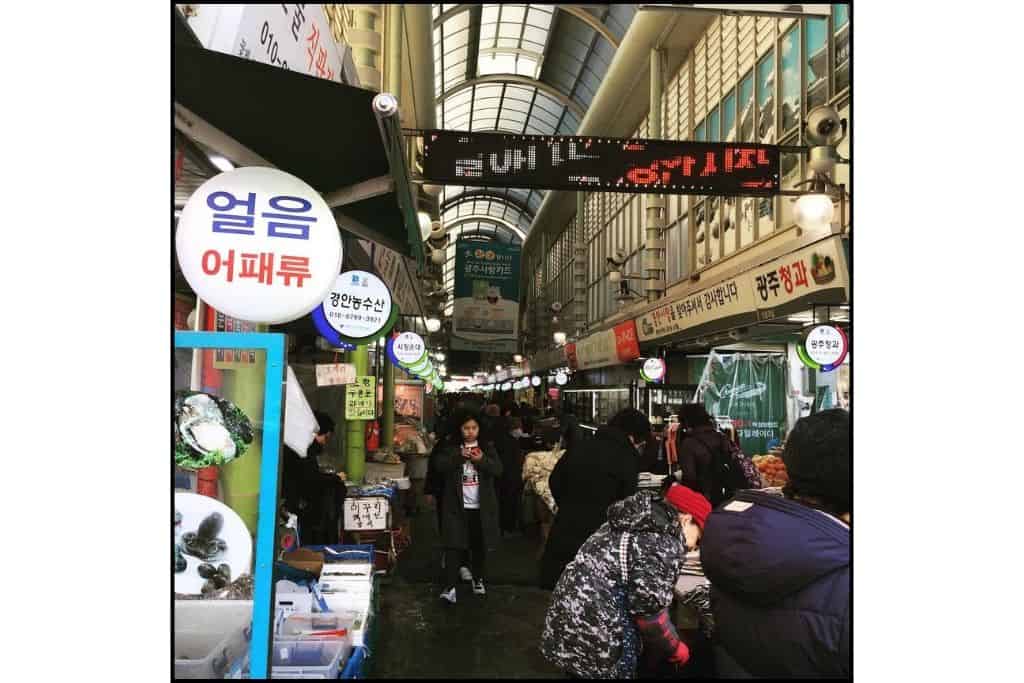
The atmosphere is lively and often crowded, especially during the day. You can shop around to compare prices, and light, respectful haggling is sometimes possible—especially for non-food items like accessories or clothing.
When to Go: Most shops are open during the day and closed on Sundays. Food stalls may run into the evening, but daytime visits are best for shopping.
How to Get There: Take Subway Line 4 to Hoehyeon Station, Exit 5.
Dongdaemun Market
Dongdaemun Market is a huge shopping district in Seoul that blends traditional markets with modern shopping complexes.
You’ll find everything from street vendors selling accessories and clothes to large malls showcasing current fashion trends.

It’s known for its late-night shopping scene and has something for nearly every budget, from bargain finds to higher-end brands.
Whether you’re browsing for souvenirs, checking out Korean fashion, or just soaking up the energy, Dongdaemun is a lively place to explore.
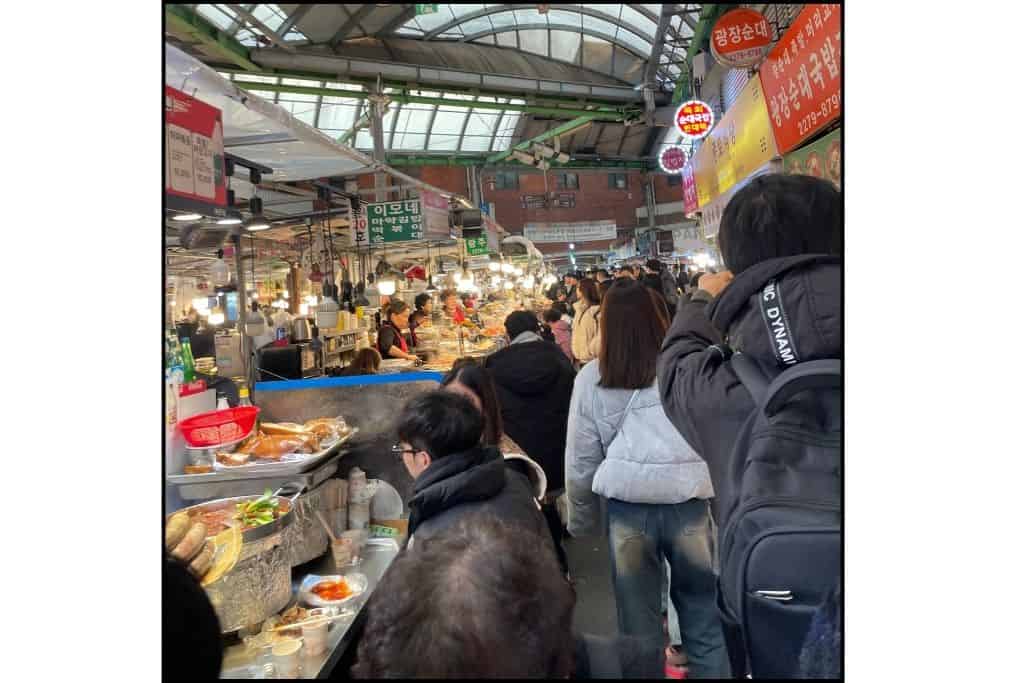
I found Dongdaemun a bit overwhelming at first — it’s huge and easy to get turned around.
If you’re visiting for the first time, it helps to pick one area to focus on—like the traditional markets or one of the malls—to avoid getting totally turned around.
How to Get There:
Dongdaemun History & Culture Park Station is more central if you’re heading to the larger malls.
Both are convenient access points.
Dongdaemun Station puts you near the main shopping areas.
Myeongdong Market
Myeongdong Market is a food lover’s paradise, especially in the evening when the streets fill with sizzling stalls and mouthwatering aromas.
You’ll find popular Korean street foods like tteokbokki, grilled meat skewers, lobster rolls, and egg bread.

While Myeongdong is known as a tourist hotspot, it’s also popular with locals for its food and shopping.
Surrounding the market are shops selling Korean skincare, cosmetics, fashion, and affordable souvenirs like socks, K-pop merch, and trinkets.
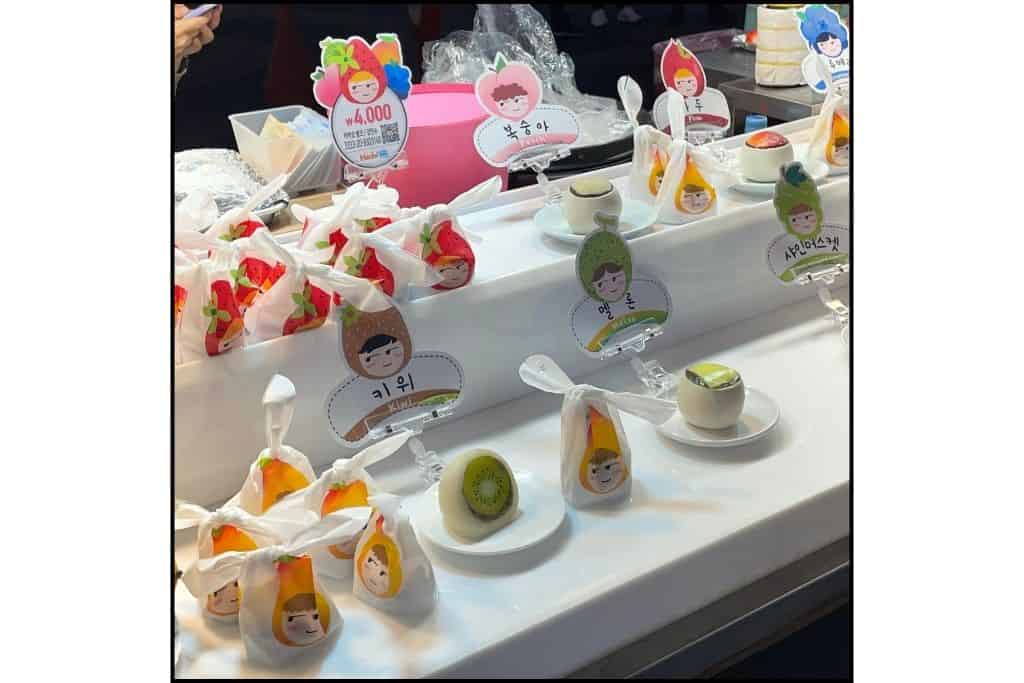
I found it easy to browse and shop even without speaking Korean, as many vendors are used to visitors, and prices are usually clearly marked.
When to Go: Shops generally open around 11 a.m. Street food stalls typically start setting up around 4 p.m. ready to serve food around 5 p.m., and close around 9–10 p.m.
How to Get There: Take the subway to Myeongdong Station, Exits 5, 6, 7, or 8 all bring you out near the action.
Gwangjang Market
Gwangjang Market, founded in 1905, is known as Korea’s first permanent market.
While it originally focused on textiles, it has evolved into a popular food destination—especially after being featured on Netflix’s “Street Food.”
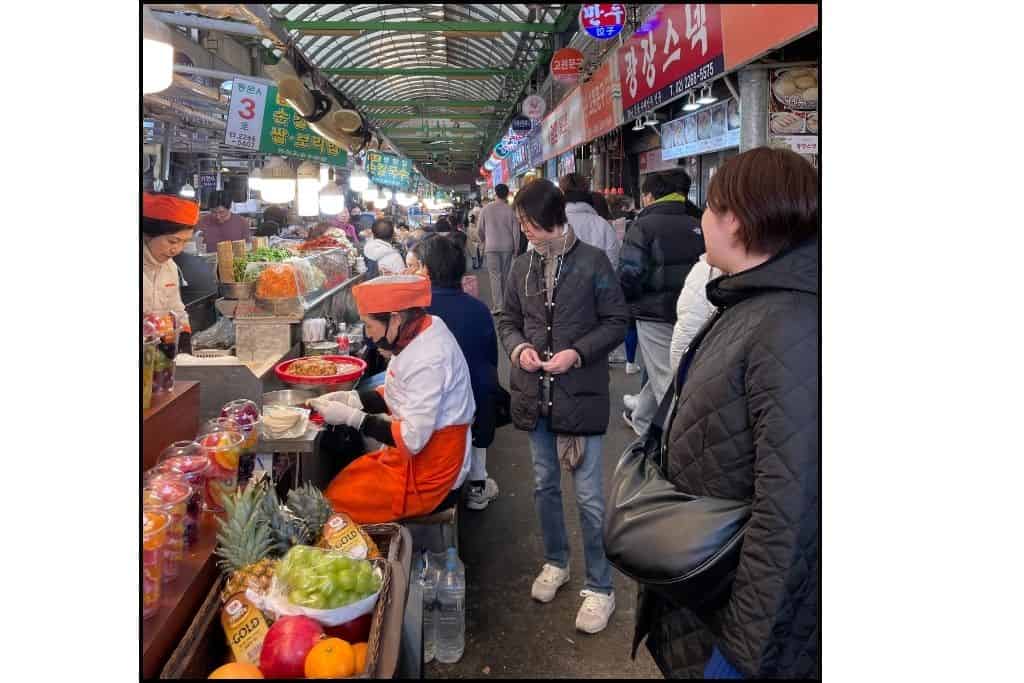
Some of the standout dishes include Mayak kimbap (nicknamed “addictive” kimbap), mung bean pancakes, and various traditional Korean street foods.
It’s a great place to sit shoulder-to-shoulder with locals and visitors while watching dishes made fresh in front of you.
That said, there have been recent concerns about vendors overcharging tourists, so it’s a good idea to ask for prices upfront and be mindful when ordering.
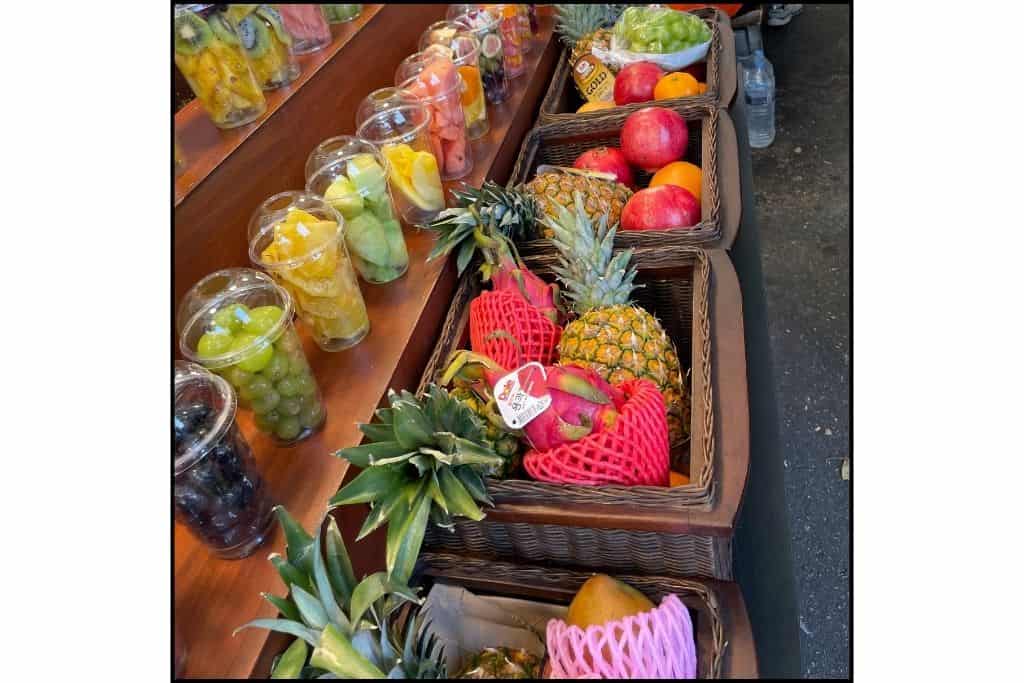
Despite the crowds and attention, Gwangjang continues to be a lively hub for Seoulites, tourists, and even chefs from around the world.
Hours:
- Shops: 8:30 a.m. – 6:00 p.m.
- Restaurants/Food Stalls: 8:30 a.m. – 11:00 p.m.
- Some stalls are closed Sundays.
How to Get There:
Jongno 5-ga Station, Exit 7 — walk straight, entrance is on your right.
Or take Euljiro 4-ga Station, Exit 4 — walk across the Cheonggyecheon Stream; entrance will be on your right.
Noryangjin Fish Market
Noryangjin Fish Market is one of Seoul’s largest seafood markets and a unique stop if you’re interested in Korea’s fishing and food culture.

The market is open 24 hours, but the busiest time is early morning—from around 5 a.m. to 9 a.m.—when the fresh catch arrives and vendors set up their stalls
. If you want to see the market at its liveliest, aim for a morning visit.

One of the most popular experiences here is picking out fresh seafood and having it cooked on the spot.
After making a selection, you can take it to one of the market’s restaurants, where it will be prepared for you—a great way to try raw fish, grilled shellfish, or spicy stews in an unforgettable setting.

Best Time to Visit: Early morning for the full experience, though the market is accessible throughout the day.
How to Get There: Take the subway to Noryangjin Station, Exit 8.
Explore Seoul’s Small Markets
If you’re looking for a more local experience, Seoul’s neighborhood markets offer a slower pace and cozy atmosphere—more like a farmer’s market than a tourist attraction.
You’ll find fresh produce, street food, and everyday goods like clothing, kitchenware, and household items, all without the crowds of the big-name markets.
These spots are perfect for seeing what daily life actually looks like in Seoul.
Mangwon Market
Mangwon Market is tucked away in the Mangwon-dong neighborhood of Mapo District. It’s a hidden gem with a low-key, community vibe—far less touristy than Seoul’s larger markets.
This traditional market has been serving locals for decades and offers a relaxed, down-to-earth experience.
You’ll find fresh produce, meat, seafood, and traditional Korean ingredients like tteok (rice cakes) and pickled goods.
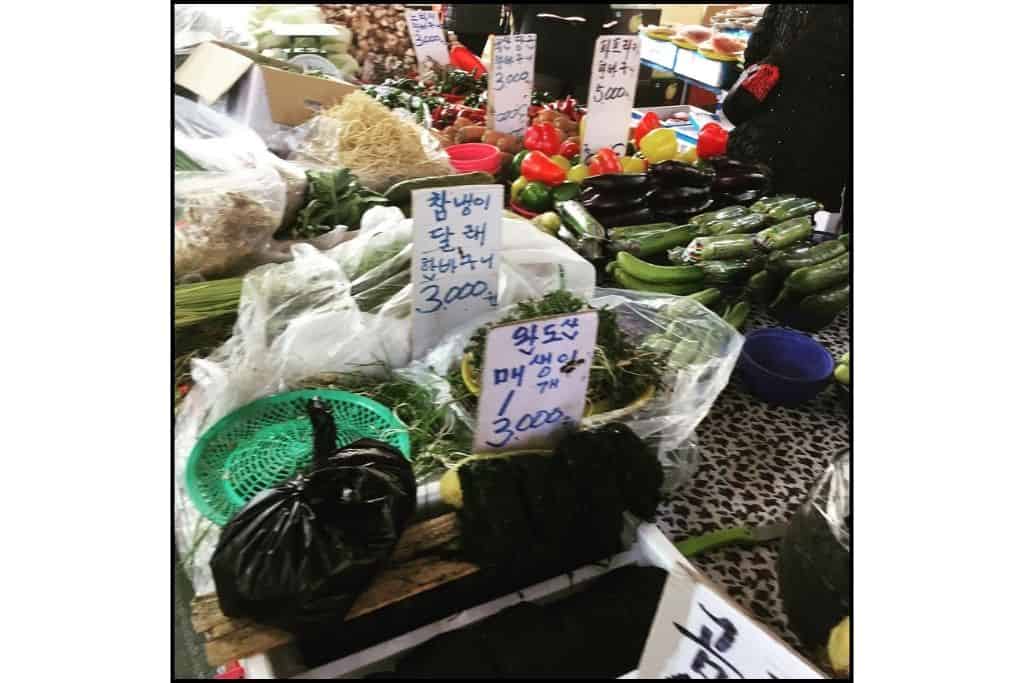
In addition to groceries, Mangwon has vendors selling clothing, home goods, and handmade items like soap and snacks. It’s not flashy, but it’s a great way to see what a true neighborhood market feels like.

When to Go: Open from early morning until around 10 p.m., with afternoons and weekends being the busiest.
How to Get There: Take the subway to Mangwon Station, Exit 2.
Tongin Market
Located near Gyeongbokgung Palace, Tongin Market is a small traditional market with a nostalgic feel.
It was established in 1941 and still blends old-world charm with modern touches.

While compact, it’s a popular stop for both locals and travelers looking to experience a bit of everyday Seoul life.
Tongin is best known for its Dosirak Café experience, where you can create your own lunchbox using traditional brass coins called yeopjeon.
For around 5,000 KRW, you buy 10 coins and “spend” them at participating food stalls on dishes like rice, banchan (side dishes), fried snacks, kimchi, and fish cakes.
After collecting your picks, you can enjoy your meal in the market’s communal dining area.
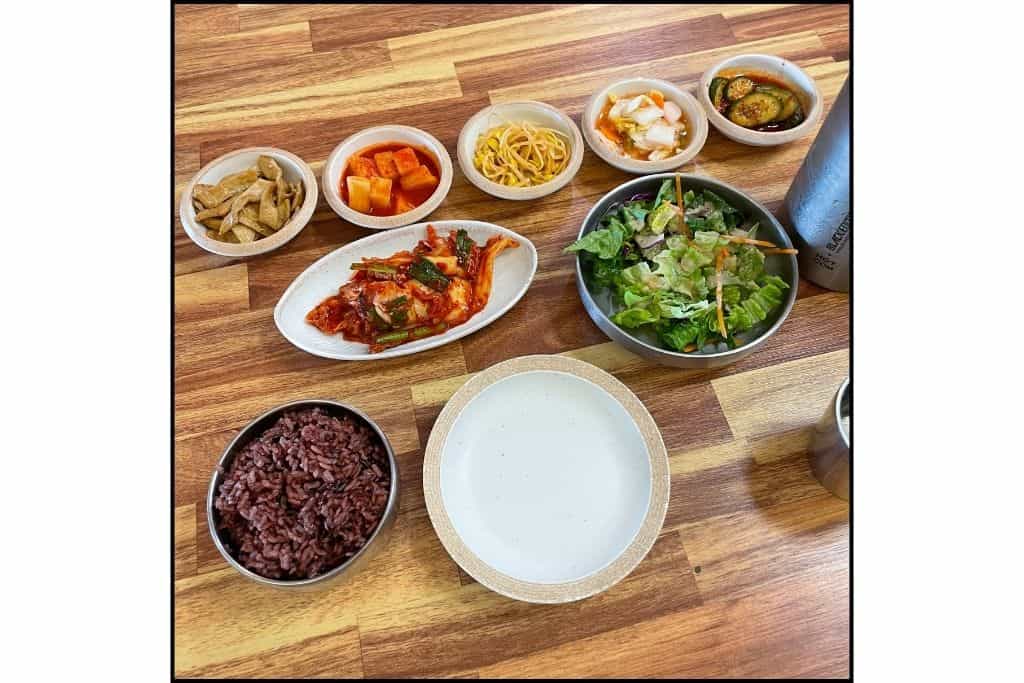
Beyond the dosirak, you’ll also find handmade crafts, clothing, and small souvenirs—making this a charming place to shop and eat.
How to Get There:
By Bus: Buses 7025, 1711, and 109 all stop near the market.
Take the subway to Gyeongbokgung Station, Exit 2. Walk about 145 meters and bear left at the Hyundai Butcher shop.
Geumnam Market
Geumnam Market is a lesser-known traditional market that offers a quieter, more intimate look at local life in Seoul.
Located in the Geumnam-dong area, this market dates back to the early 20th century and has evolved into a lively space for neighborhood vendors and everyday shoppers.
It’s not flashy or touristy, which makes it a great place to see Seoul off the beaten path.
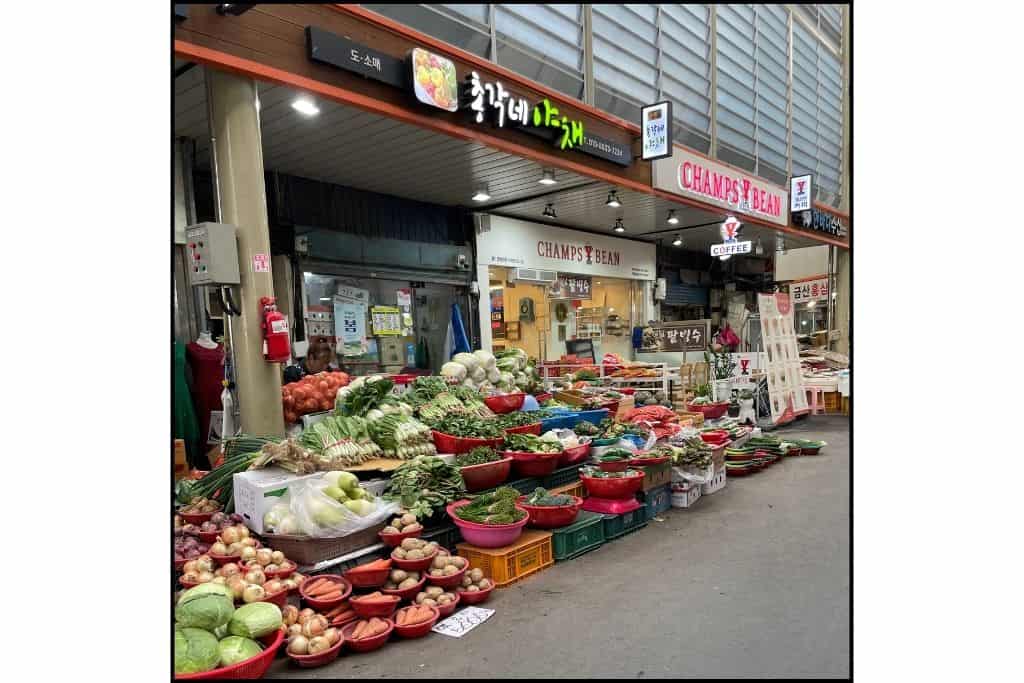
You’ll find a mix of fresh produce, home-style Korean street food, and handmade items, along with local ingredients and daily necessities.
It’s the kind of place where residents shop regularly—low-key, practical, and full of personality.
How to Get There: Take the subway to Geumho Station, Exit 1, and walk toward Geumho Park.
Norunsan Market
Located near Konkuk University Station in Gwangjin-gu, Norunsan Market offers a glimpse into daily life in a residential neighborhood of Seoul.
This traditional market features a variety of stalls selling fresh produce, seafood, meats, and everyday essentials like household goods.
It’s a popular spot among locals—and a solid option if you’re nearby and want an authentic, no-frills market experience.

While it’s not a major tourist stop, Norunsan is a great example of how traditional markets still serve as community hubs across the city.
When to Go: Most stalls are open from around 9:00 a.m. to 8:00 p.m., but exact hours can vary by vendor.
How to Get There: Take the subway to Konkuk University Station, Exit 5. Walk along Achasan-ro, turn left onto Dongil-ro, and look for the market just before the overpass.
Yeongdong Market
Yeongdong Market is located near Sinnonhyeon Station in Seoul’s Nonhyeon-dong area.
Tucked away in a quieter part of Gangnam, it’s a local favorite known for its traditional food and everyday shopping.
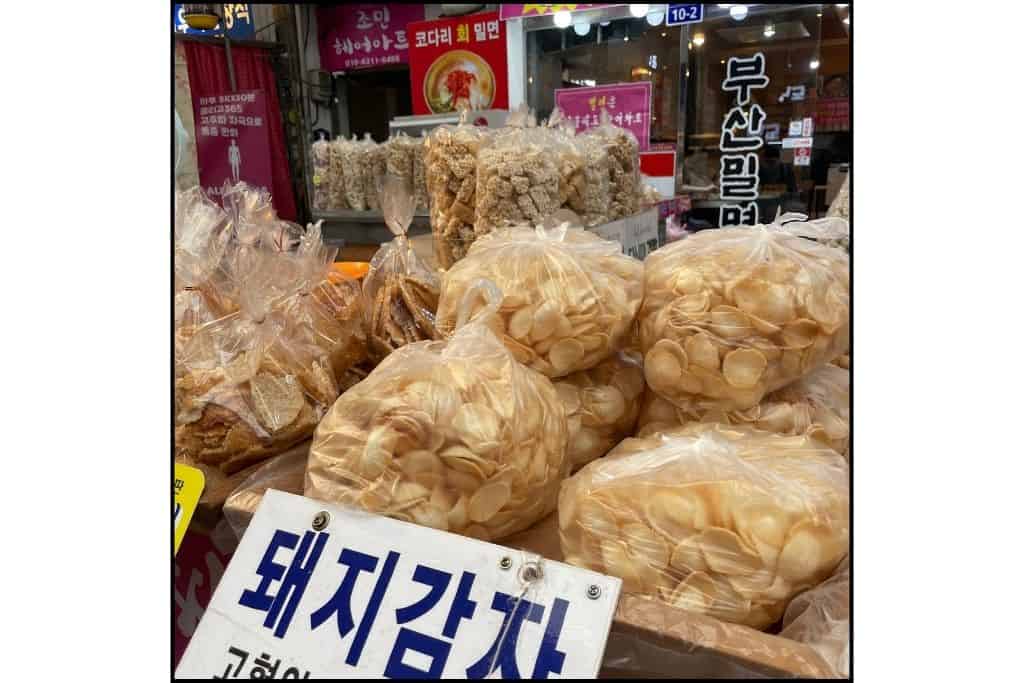
You’ll find stalls selling fresh produce, dried fish, kimchi, and specialty ingredients like rice, beans, and sauces.
It’s also a great place to try comfort food like soondae-guk (blood sausage soup) or sweet rice pancakes from casual food stands.
Though small and low-key, Yeongdong Market offers a welcoming, neighborhood feel that’s perfect if you’re staying in the area and want a break from the flashier tourist spots.

When to Go: The market is open during the day and into the early evening. Some food stalls may stay open late.
How to Get There: Take the subway to Sinnonhyeon Station, Exit 1. The market is a short walk from the station.
Tips and Pointers For Visiting Markets In Seoul
- Carry Cash – Many vendors still prefer cash, especially at traditional markets. Bring smaller bills and coins for quick transactions.
- Eat Near the Vendor – At night markets like Myeongdong, trash cans are hard to find. Most vendors will take care of your wrappers or skewers—just eat nearby and hand it back when you’re done.
- Haggle (Sometimes) – Polite bargaining is fine in some markets like Namdaemun—especially for clothing or souvenirs. Don’t try to haggle over food; prices are usually fixed and posted.
- Bring a Tote Bag – A reusable tote is eco-friendly and convenient for carrying your finds.
- Check Hours and Specialties – Every market has different hours and specialties. A little planning goes a long way—some places are best during the day, others shine at night.
- Look for Seasonal Events – Some markets host seasonal festivals, themed food stalls, or local celebrations. Check online or keep an eye out for banners on-site.
- Visit at the Right Time – Want to avoid crowds? Go early in the day. Want full street food vibes? Evening is best at places like Dongdaemun or Gwangjang.

FAQ
Yes — especially in places like subways, tourist areas, and major roads. Markets and smaller shops may not have English signs, but translation apps and friendly locals make it easy enough to navigate.
The easiest way is to use an eSIM. You can activate it before your trip and have mobile data the second you land. South Korea has excellent mobile coverage, so you’ll stay connected throughout the city.
Currency exchange booths in popular areas like Myeongdong often offer better rates than banks or airports. ATMs that accept international cards are also widely available for withdrawing Korean won.
Wrap Up
Seoul’s markets offer a vibrant, up-close look at Korean culture—whether you’re trying mung bean pancakes at Gwangjang or building a dosirak lunchbox at Tongin.
From massive shopping districts to cozy neighborhood stalls, each market has its own rhythm, flavors, and charm.
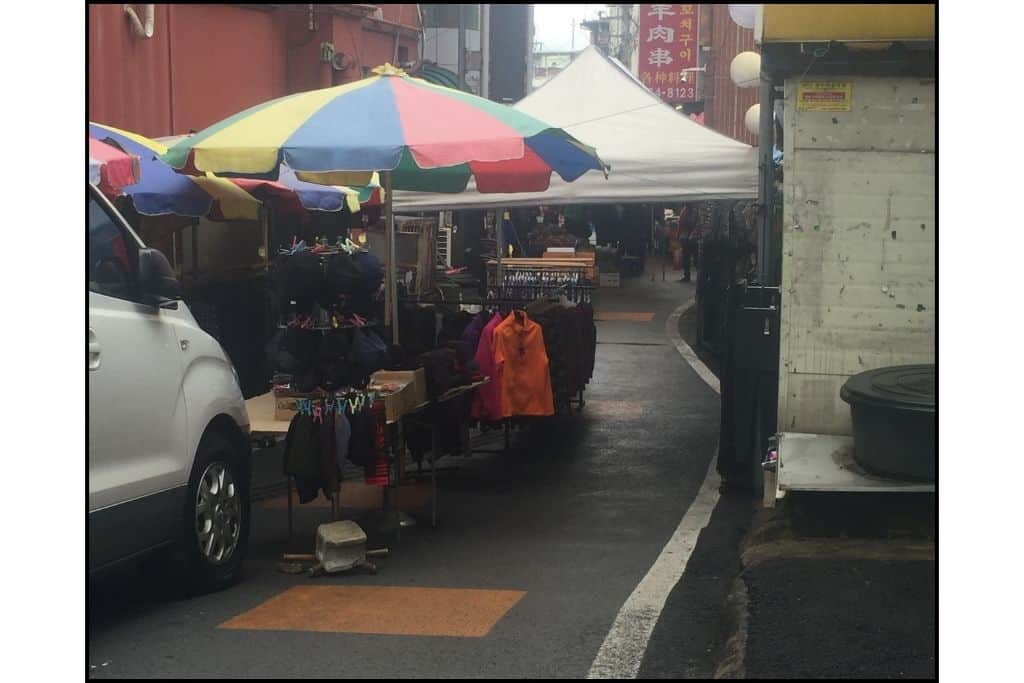
If you’re planning your itinerary, these markets are more than just places to shop—they’re a chance to taste, explore, and connect with daily life in the city.
Keep Exploring Seoul
Make sure to check out these Seoul travel guides before your trip:
✅ Things to Do in Seoul – Landmarks, cultural stops, and must-try experiences
✅ Where to Stay in Seoul – Neighborhood breakdowns for every style and budget
✅ How to Get from the Airport to Seoul – Stress-free arrival tips
✅ 3-Day Seoul Itinerary – Your plan for a perfectly paced trip
Taking the KTX and need tickets? Book your KTX train tickets early!
